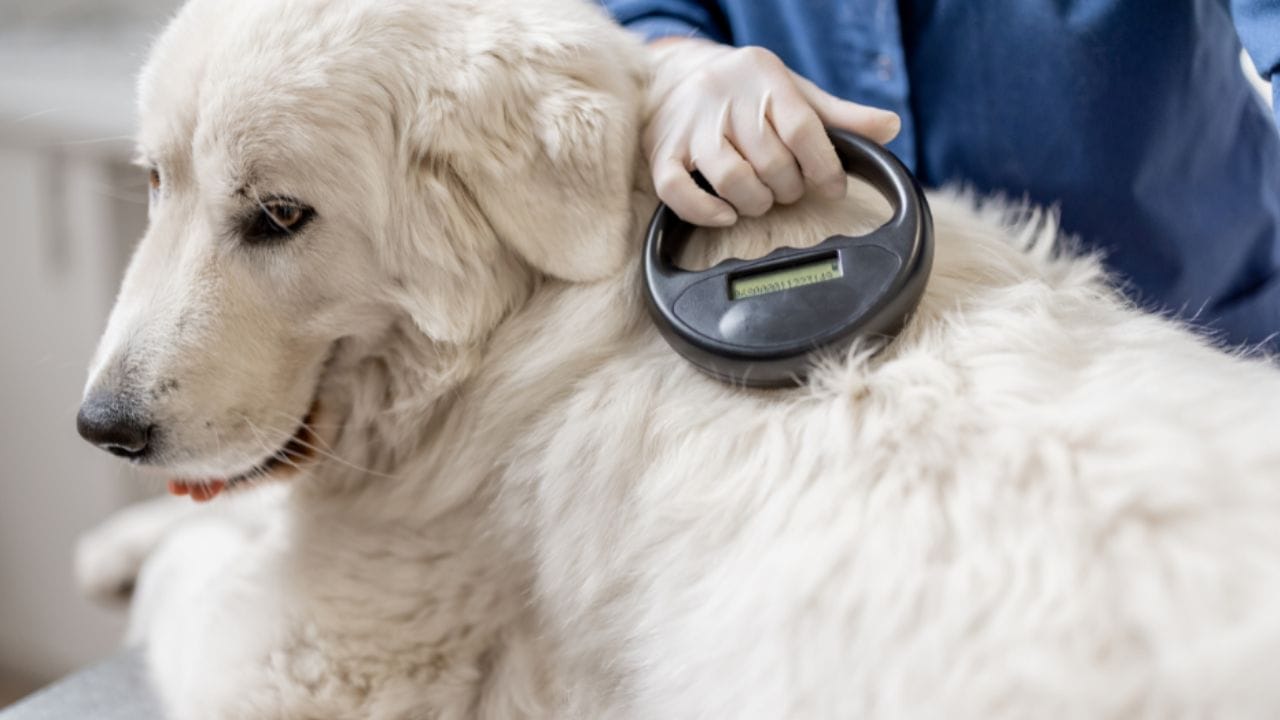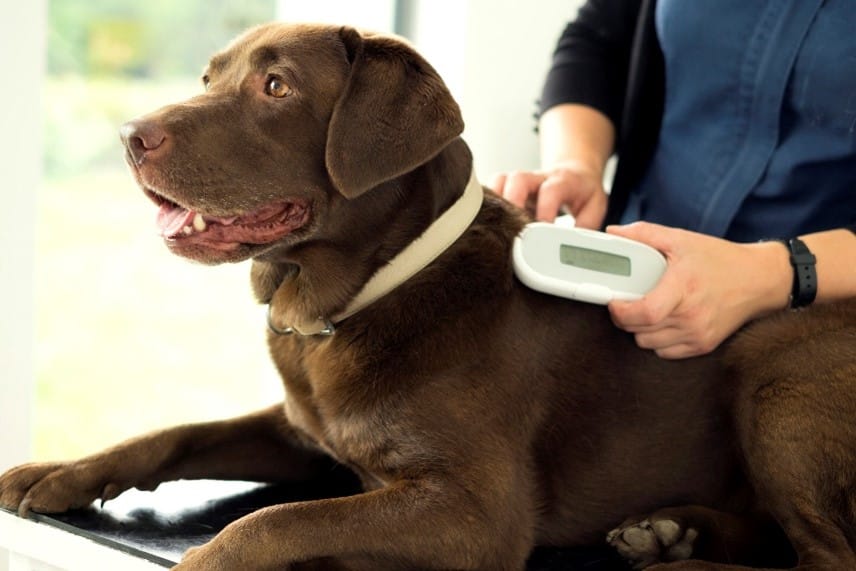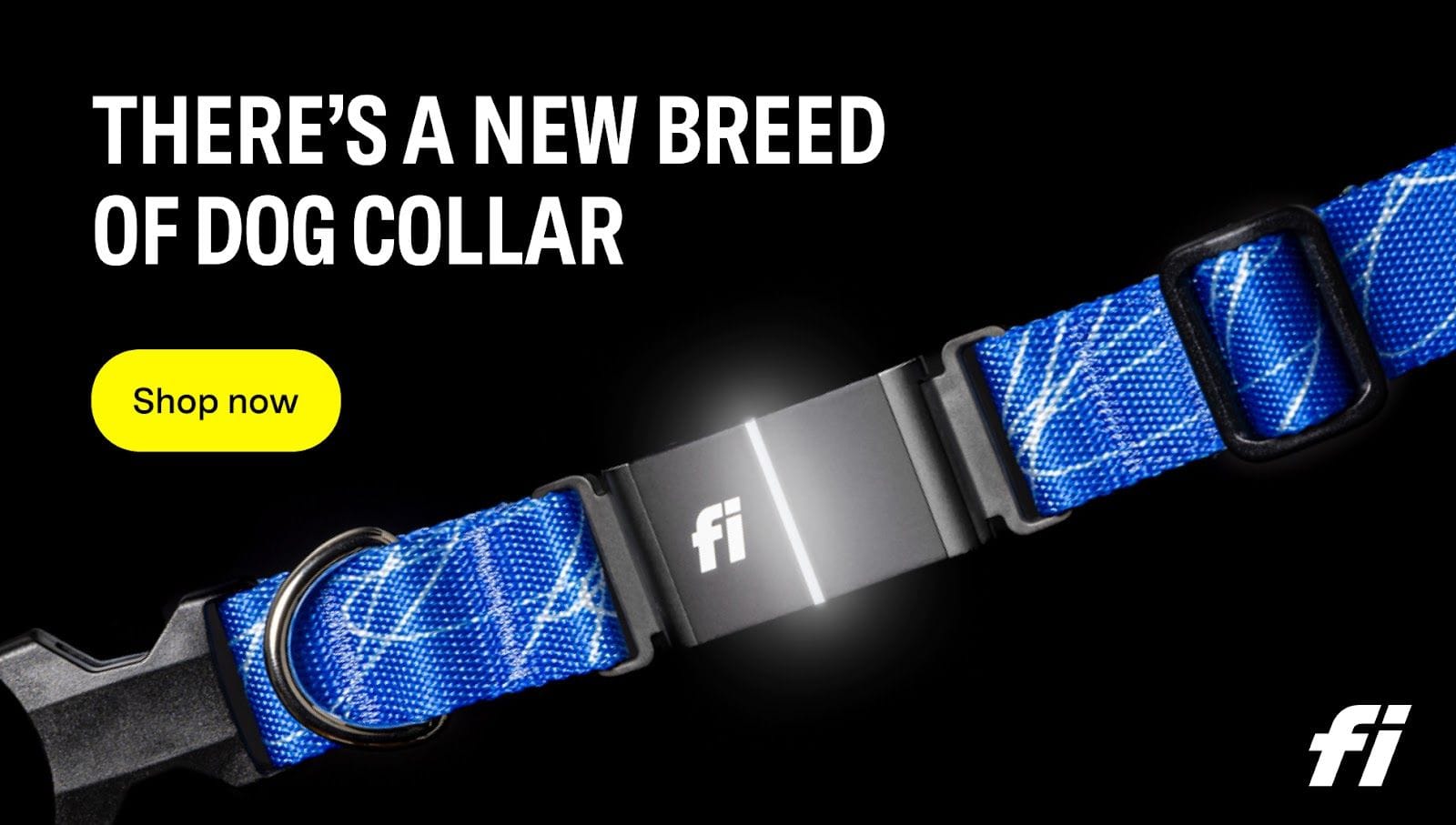Microchipping your dog is a simple procedure that can help ensure your pet's safety. This small, implantable chip contains a unique identification number that can be used to identify your dog if they become lost or stolen. While microchipping is a relatively inexpensive procedure, the cost can vary depending on a number of factors.

Understanding the cost factors of microchipping is important for pet owners who want to ensure their dog's safety without breaking the bank. The cost of microchipping can vary depending on the size and breed of your dog, as well as the location and type of chip used. Additionally, there may be additional costs associated with registering your dog's microchip and updating their information in recovery databases.
Key Takeaways
- Microchipping is a simple and effective way to ensure your dog's safety.
- The cost of microchipping can vary depending on a number of factors, including the size and breed of your dog and the type of chip used.
- Registering your dog's microchip and keeping their information up to date is an important part of the process.
Understanding Microchipping
What Is a Microchip?
A microchip is a small device, about the size of a grain of rice, that is implanted under the skin of a dog between the shoulder blades. This device contains a unique identification number that can be read using a special scanner. The identification number is linked to the owner's contact information in a database, making it easier to reunite lost dogs with their owners.
How Microchips Work
Microchips use radio frequency identification (RFID) technology to transmit a signal to a scanner. When a scanner is passed over the area where the microchip is implanted, the device emits a signal that the scanner can pick up. The scanner then displays the unique identification number associated with the microchip.
Benefits of Microchipping Your Dog
Microchipping your dog can provide peace of mind in case your dog ever gets lost or stolen. Unlike collars or tags, which can fall off or be removed, a microchip provides a permanent form of identification. Additionally, many animal shelters and veterinary clinics have scanners and can quickly identify lost dogs and contact their owners.
The cost of microchipping a dog can vary depending on the location and the veterinarian performing the procedure. On average, the cost can range from $25 to $50. While it may seem like an additional expense, the benefits of microchipping far outweigh the cost.

The Cost Factors of Microchipping
Microchipping is a popular method of identification for dogs, and it comes with a cost. The cost of microchipping a dog depends on several factors, including the type of microchip used, the veterinary office or clinic that performs the procedure, and the region in which the dog owner resides. Here are some of the cost factors to consider:
Microchip and Registration Fees
The cost of the microchip itself is typically between $25 and $50, depending on the brand and type of chip. Some veterinary offices or clinics may charge an additional fee for the procedure, which can range from $50 to $100. In addition to the microchip cost, there is also a registration fee that ranges from $10 to $20. This fee is paid to the registry that maintains the database of microchip information.
Veterinary Costs and Additional Services
The cost of microchipping a dog may also depend on the veterinarian or veterinary office that performs the procedure. Some veterinarians may charge more for the procedure, while others may offer discounts or package deals that include additional services, such as vaccinations or wellness exams. It is important to shop around and compare prices to find an affordable option.
Cost Variations by Region
The cost of microchipping a dog can also vary by region. In some areas, the cost may be higher due to higher living expenses or a higher demand for veterinary services. In other areas, the cost may be lower due to lower living expenses or a lower demand for veterinary services. It is important to research the cost of microchipping in your area to get an accurate estimate.
In conclusion, the cost of microchipping a dog can vary depending on several factors, including the type of microchip used, the veterinary office or clinic that performs the procedure, and the region in which the dog owner resides. It is important to do your research and compare prices to find an affordable option.
The Microchipping Procedure
Microchipping is a simple, safe, and effective way to ensure that your dog can be identified if they were to get lost. The procedure involves the implantation of a tiny microchip, about the size of a grain of rice, under the skin of the dog's neck. Here's what you need to know about the microchipping procedure.
Pre-Implantation Considerations
Before the implantation procedure, the dog's owner should ensure that their dog is up-to-date on all their vaccinations and is in good overall health. The veterinarian will also check the dog's medical history to ensure that there are no underlying conditions that could complicate the procedure.
During the Procedure
The implantation procedure is relatively quick and straightforward. The veterinarian will use a needle to inject the microchip under the dog's skin, usually in the neck area. The procedure typically takes only a few minutes and is generally well-tolerated by dogs.
To minimize any discomfort, the veterinarian may use a local anesthetic to numb the area before the injection. However, most dogs do not require anesthesia for the procedure.
Post-Implantation Care
After the implantation procedure, the dog's owner should keep the area clean and dry for a few days. The veterinarian will provide specific instructions on how to care for the area to prevent infection.

It's important to note that while the implantation procedure itself is relatively painless, some dogs may experience mild discomfort or soreness at the injection site for a few days afterward. However, this should resolve on its own without any intervention.
In summary, the microchipping procedure is a safe and effective way to ensure that your dog can be identified if they were to get lost. While the procedure may cause some mild discomfort or soreness, it is generally well-tolerated by dogs and requires minimal post-implantation care.
Registration and Recovery Databases
Microchipping a dog is an essential step in ensuring their safety and increasing the likelihood of reuniting with them if they go missing. However, the microchip itself is not enough to guarantee a reunion. Registering the microchip and keeping the contact information up to date are equally important.
Why Registration Is Essential
When a dog is microchipped, the unique identification number associated with the chip is recorded in a registry or database. This number is then linked to the owner's contact information. If the dog is lost and found by someone, a veterinarian, or an animal shelter, they can use a microchip scanner to read the chip's ID number. The scanner can then be used to look up the dog's information in the registry or database.
Without registration, the microchip is essentially useless. If the owner's contact information is not linked to the microchip's ID number, there is no way to contact them and reunite them with their dog.
How to Register Your Dog's Microchip
The process of registering a dog's microchip is simple and can usually be done online or by phone. The microchip company or registry will require some basic information, such as the owner's name, address, phone number, and the dog's name, breed, and age. Once the information is entered into the database, it is linked to the microchip's ID number.
It is important to note that different microchip companies may have their own registration process and database. It is recommended to choose a reputable company and register the microchip with their database.
Updating Your Contact Information
Keeping the contact information up to date is crucial in ensuring a successful reunion with a lost dog. If the owner moves or changes phone numbers, they must update the information in the microchip registry or database. Most companies allow owners to update their information online or by phone.
Owners should also consider registering their dog's microchip with a pet recovery database. These databases are not linked to any specific microchip company and can be accessed by any shelter or veterinarian with a microchip scanner. Registering with a pet recovery database can increase the chances of reuniting with a lost dog.
In conclusion, registering a dog's microchip and keeping the contact information up to date are essential steps in ensuring their safety and increasing the likelihood of a reunion if they go missing. It is important to choose a reputable microchip company and register with their database, as well as consider registering with a pet recovery database.
Microchipping Versus Other Forms of Identification
When it comes to identifying a lost dog, there are several options available to pet owners. Microchipping is a popular choice, but it's not the only one. In this section, we'll explore the pros and cons of microchipping compared to other forms of identification.
Collars and Tags
One of the most common forms of identification for dogs is a collar and tag. This is a simple and inexpensive option that allows anyone who finds a lost dog to quickly identify its owner. Collars and tags can be customized with the dog's name, owner's phone number, and other important information.
However, collars and tags can also be easily lost or removed. If a dog slips out of its collar or someone deliberately removes the tag, there's no way to identify the owner. Additionally, collars and tags can wear down over time and become unreadable.
GPS Trackers and Their Limitations
GPS trackers are another option for pet owners. These devices use GPS technology to track a dog's location in real-time. Some GPS devices even come with additional features like activity tracking and virtual fences.

While GPS trackers can be useful, they do have some limitations. For example, they require a battery and need to be charged regularly. Additionally, GPS trackers can be expensive and may not be within everyone's budget.
Combining Microchips with Other Forms of ID
Many pet owners choose to combine microchipping with other forms of identification, such as collars and tags or GPS devices. This can provide an extra layer of protection and increase the chances of a lost dog being reunited with its owner.
When combining microchips with other forms of ID, it's important to make sure that all of the information is up-to-date and accurate. This includes updating contact information if the owner moves or changes phone numbers.
Overall, microchipping is a reliable and permanent form of identification for dogs. While it's not the only option, it's a popular choice for pet owners who want to ensure that their furry friends can be easily identified if they ever get lost.
Additional Considerations
Insurance and Microchipping
Pet insurance is an excellent way to protect your pet from unexpected medical expenses. Many pet insurance companies offer coverage for microchipping, which can help offset the cost of the procedure. Some companies may even cover the cost of the microchip itself, as well as any associated fees.
Before purchasing pet insurance, it's essential to read the policy carefully to ensure that microchipping is covered. Some policies may have limitations on coverage, such as a maximum reimbursement amount or a deductible that must be met before coverage kicks in.
Microchipping as a Standard for Shelters and Rescues
Many animal shelters and rescues require all pets to be microchipped before adoption. This requirement helps ensure that pets are quickly reunited with their owners if they become lost. Some shelters and rescues may even offer microchipping services at a reduced cost or as part of the adoption fee.
The Role of Microchipping in Pet Recovery
Microchipping is a vital tool in reuniting lost pets with their owners. According to the American Veterinary Medical Association, microchipped dogs are more than twice as likely to be returned to their owners than those without a microchip. Microchipping is also a safe and effective way to identify pets, as it does not rely on external tags or collars that can become lost or damaged.
Legal and Ethical Considerations
Microchipping is a safe and ethical procedure that is widely accepted by animal welfare organizations, including the American Humane Association and the ASPCA. However, it's essential to ensure that the procedure is performed by a licensed veterinarian and that the microchip is registered with a reputable database. Pet owners should also be aware of their legal responsibilities, such as keeping their contact information up to date and complying with local pet ownership laws.

Overall, microchipping is a safe and effective way to protect pets and increase the chances of reuniting lost pets with their owners. With proper registration and maintenance, a microchip can provide a lifetime of protection for your furry friend.
Conclusion
Microchipping a dog is a wise decision for any pet owner. It not only provides peace of mind but also helps to ensure that a lost dog can be identified and returned to its rightful owner. The cost of microchipping a dog can vary depending on several factors such as the location, the type of microchip, and the veterinarian's fees.
In the United States, the cost of microchipping a dog ranges from $25 to $75, with an average cost of around $45. However, some shelters and animal welfare organizations offer microchipping services at a lower cost or even for free. It is important to note that while the initial cost of microchipping may seem high, it is a one-time expense that can potentially save a dog's life.
Microchip scanners are widely available in the United States, and most animal shelters and veterinary clinics have them. These scanners can read the information stored on a dog's microchip and help to reunite lost dogs with their owners. It is important to ensure that the microchip is registered and up to date with the owner's current contact information.
The process of implanting a microchip in a dog is quick and relatively painless. The microchip is about the size of a grain of rice and is implanted under the skin between the dog's shoulder blades. The procedure can be done by a veterinarian or a trained technician.
In conclusion, microchipping a dog is a small price to pay for the peace of mind that comes with knowing that a lost dog can be identified and returned to its owner. The cost of microchipping is reasonable and can vary depending on several factors. Microchip scanners are widely available, and the process of implanting a microchip is quick and relatively painless.
Frequently Asked Questions
- Where can I find low-cost microchipping services for my dog?
- Many animal shelters and rescue organizations offer low-cost microchipping services for dogs. You can also check with your local humane society or animal welfare organization to see if they offer discounted microchipping services. Additionally, some veterinary clinics may offer special promotions or discounts for microchipping during certain times of the year.
- What are the typical fees for microchipping a dog at veterinary clinics?
- The cost of microchipping a dog at a veterinary clinic can vary depending on the location and the specific clinic. On average, you can expect to pay between $50 and $75 for the procedure. Some clinics may charge additional fees for registration or for updating your dog's information in the microchip database.
- Are there any special deals for microchipping at nationwide pet stores?
- Some nationwide pet store chains may offer special deals or promotions for microchipping services. However, it's important to do your research and make sure that the person performing the procedure is properly trained and qualified.
- What is the price difference for microchipping dogs in various states?
- The cost of microchipping a dog can vary from state to state. In general, you can expect to pay more for the procedure in urban or high-cost areas. However, it's important to remember that the cost of microchipping is a small price to pay for the peace of mind that comes with knowing your dog can be easily identified and returned to you if lost.
- At what age should I consider microchipping my puppy?
- Most veterinarians recommend microchipping puppies between 8 and 12 weeks of age. However, it's never too late to microchip your dog. Even if your dog is older, microchipping can still be a valuable tool for ensuring their safe return if they ever become lost.
- Can microchipping my dog help with tracking and recovery?
- Yes, microchipping your dog can greatly increase their chances of being returned to you if they become lost. Microchips contain a unique identification number that can be used to link your dog to your contact information in a national database. Many animal shelters and veterinary clinics have scanners that can read the microchip and help reunite lost dogs with their owners.





